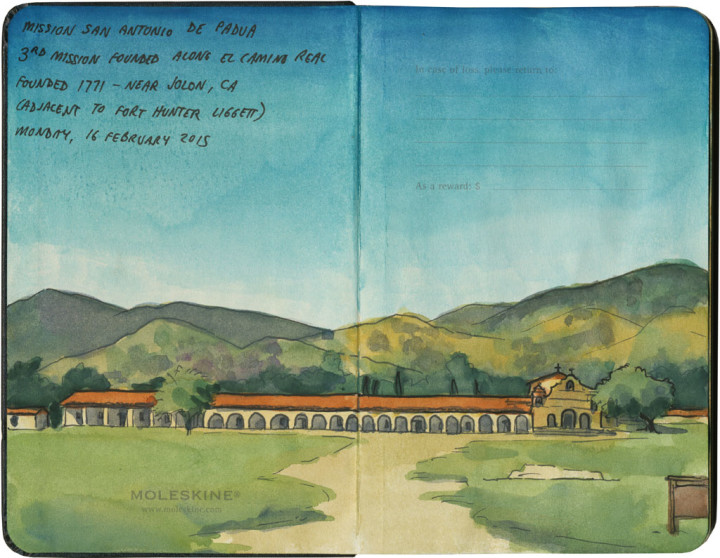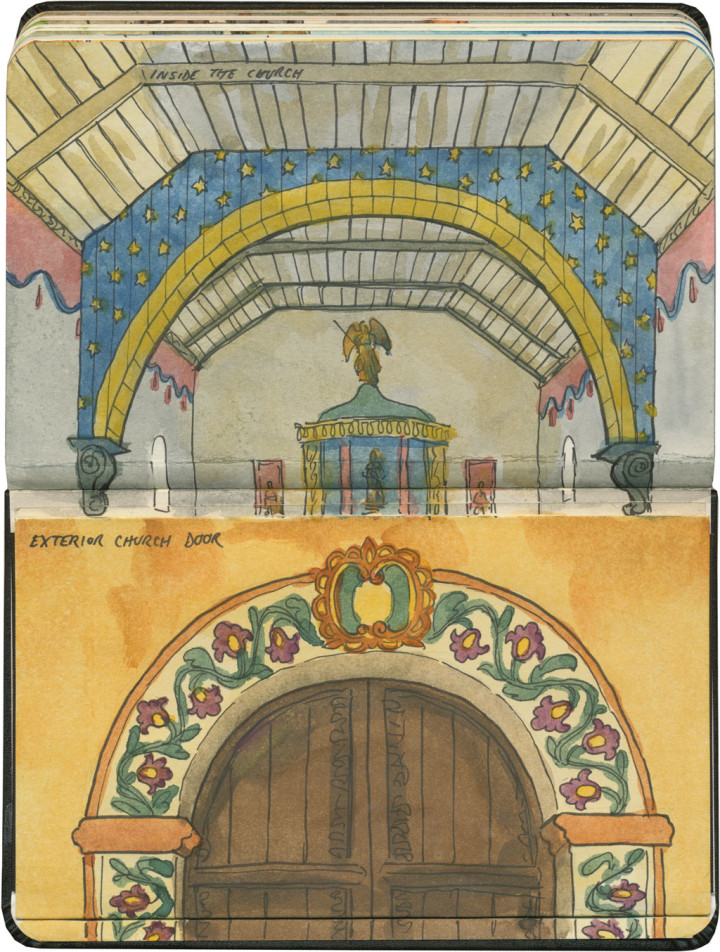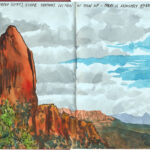This is the twelfth installment of my Mission Mondays series, exploring all 21 Spanish Missions along the California coast. You can read more about this series, and see a sketch map of all the missions, at this post.
Note: At the time of my visit, the façade of the building was ensconced in scaffolding. I was so sad at the idea of including it in my sketches that I just…didn’t. I drew around it, and sketched as if it weren’t there. So know that if you go, you might not find it looking like this. I’m not sure how long the current restoration project will go on.
Today we’ll visit a mission that stands out among its brothers and sisters. While some details might bring to mind places like La Purisima or San Juan Capistrano, there’s simply nowhere quite like Mission San Antonio de Padua.
As you head north out of San Luis Obispo along the Salinas Valley, you’ll pass three missions before you reach Monterey Bay. Each one is more remote than the one before, so make sure you have food, water and plenty of petrol if you decide to make the trek.
San Antonio, the second of the Salinas Valley three, is one of the oldest missions in the entire chain. And it has all kinds of features and details that you won’t find at any of the others—like the subtly contrasting archways. Or the campanile situated in front of the main entrance, instead of off to the side or around the corner.
The interior of the church is also really unusual, with its squared-off arches and wooden planking.
The overall look of the place is different, too—like this might be a Texas or New Mexico mission instead (or perhaps Italy, like San Antonio himself).
It’s certainly located in the most mountainous stretch of the Royal Road—and since you actually have to enter and cross a military installation (which buffers the place even further from modern civilization) to get here, the trip really feels like an old-fashioned expedition.
Maybe that’s what I liked best of all: this feeling of stepping back in time and seeing the one mission that is perhaps the closest to how it has always been.






 Ghost domes
Ghost domes  Forgotten canyon
Forgotten canyon  Twists and turns
Twists and turns 